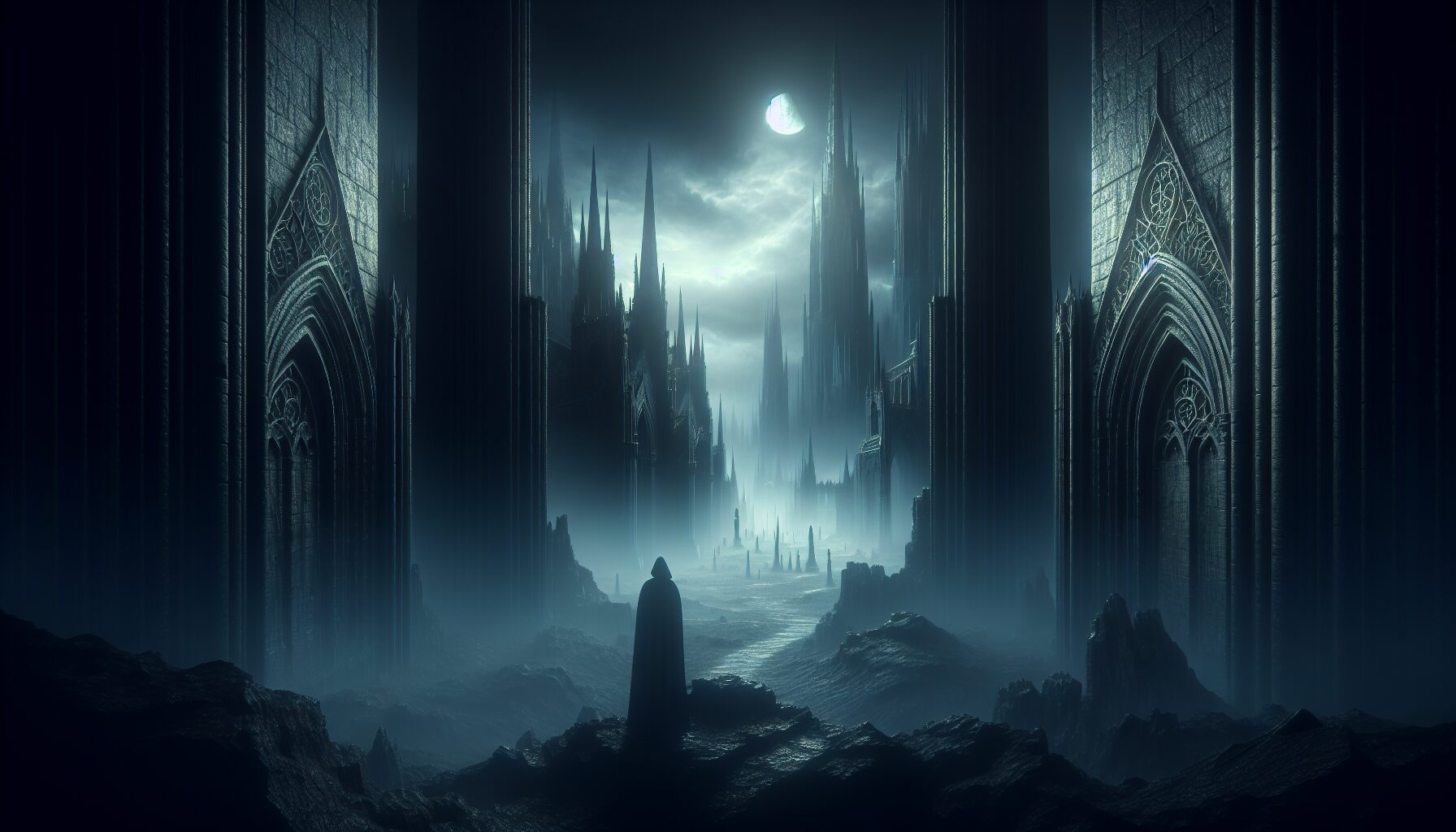Gothic Philosophy: Thinking in the Shadows
Gothic philosophy has long been an overlooked field within the wider realm of philosophical inquiry. Drawing inspiration from the haunting aesthetics and emotional depth of the Gothic literary genre, Gothic philosophy dares to grapple with the shadowy corners of human experience, challenging traditional enlightenment ideals with a focus on emotion, mortality, and the uncanny.
The Origins of Gothic Thought
Emerging prominently in the late 18th century alongside the rise of Gothic literature, Gothic philosophy embodies a unique marriage between art and thought. The Gothic novel, epitomized by Mary Shelley’s “Frankenstein” and Bram Stoker’s “Dracula,” provides a fertile ground for philosophical exploration.
Shelley’s work, often considered the first science fiction novel, offers a cautionary tale on the hubris of scientific advancement unchecked by ethical considerations. As philosopher G.K. Chesterton once noted about Gothic literature, “It must be done stylishly… but it must be done by assuming the horrible things to be true.” (G.K. Chesterton)
The Gothic Lens: Key Themes
Several core themes sit at the heart of Gothic philosophy:
- Duality and the Human Condition: The coexistence of good and evil within individuals, reflecting the dual nature of humanity.
- Mortality and the Sublime: The acknowledgment and acceptance of death, often portrayed through grand, sublime landscapes or decrepit settings.
- The Uncanny: The familiar made unfamiliar, echoing Freud’s concept of das Unheimliche.
These themes set the stage for a philosophical examination of the human psyche, revealing deeper truths about our fears and desires.
Mortality and Melancholy
“I am alone and miserable; man will not associate with me… I am an outcast in the world forever.” — Mary Shelley, Frankenstein
The preoccupation with death and decay is a hallmark of Gothic philosophy. The subgenre delves into the romanticization of mortality and melancholy. This fascination is not morbid for its own sake but serves as a reflection of one’s own transience and the beauty of the fleeting.
Philosophers such as Søren Kierkegaard have echoed similar sentiments, with his existential exploration of dread and despair. As a prophet of existentialism, Kierkegaard’s work parallels Gothic themes with its emphasis on individual isolation and anxiety.
The Role of Emotion in Gothic Thought
Gothic philosophy places significant emphasis on emotion over rationality, a concept that directly opposes Enlightenment ideals. Enlightenment philosophy, rooted in rationalism and the scientific method, often dismissed emotion as inferior to reason.
However, Gothic thinkers prioritize feelings as a legitimate source of knowledge. The experience of fear, in a Gothic context, becomes a means to an end: a way to unravel deeper truths about humanity’s place in the world and the forces that govern existence.
Influence on Contemporary Philosophy
Gothic philosophy’s influence extends into modern existentialist and post-structuralist schools of thought. The existential dread articulated by Gothic thinkers finds echoes in the works of philosophers like Jean-Paul Sartre and Albert Camus, who grapple with the absurdity of human existence.
Post-structuralists, too, draw from the Gothic’s interrogation of identity and reality. Jacques Derrida’s deconstructionist approach echoes the Gothic’s inherent skepticism of fixed truths, offering a framework for understanding the world as a web of interconnected meanings.
Concluding Thoughts
Gothic philosophy serves as a reminder of the necessity of darkness in the pursuit of truth. By embracing emotion, the uncanny, and mortality, Gothic thought challenges individuals to confront their fears and uncertainties. In an era where rationality often reigns supreme, the resurgence of interest in Gothic philosophy heralds a renewed appreciation for its introspective depth and timeless relevance.
Ultimately, Gothic philosophy invites us to think in the shadows, recognizing that sometimes the deepest insights can be found not in the stark light of reason, but within the mysterious, shaded recesses of the human soul.

Comments